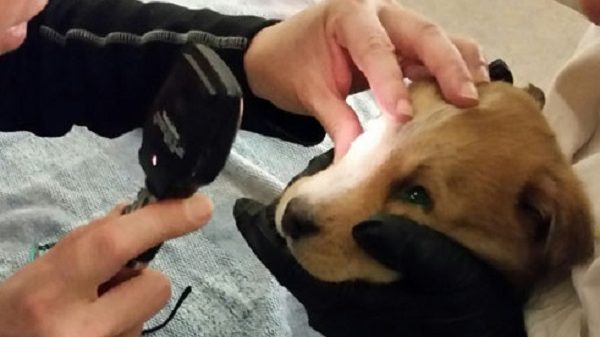A report done by Mount Royal University shows that current emergency and disaster management (EDM) protocols in the municipality and the province lack guidelines for companion pets during an emergency evacuation.
Dr. Kimberly Williams of the Centre for Community Disaster Research at Mount Royal University launched the project in June 2016 to explore what worked and what didn’t work during the 2016 wildfire evacuation.
She did in-depth interviews with 32 key stakeholders including first responders, emergency management personnel, veterinarians, animal rescue organizations and evacuees with pets.
Williams said the report isn’t a critique on the municipality, but rather a summary of how things can be improved.
“The problem actually is in the structure of disaster management, of emergency preparedness, it doesn’t leave any room for companion animals. One of the things I argue in the report is that Alberta as a province and then potentially even municipalities need to have some kind of plan.”
Since evacuation orders came throughout the day on May 3, 2016, many people went home midday to gather their belongings, but were confronted by emergency roadblocks, causing forcible abandonment of 1200 to 1500 pets.
This led to mass confusion and problems for various reasons, leaving pets to be cared for by first responders for at least four days.
Of the most important lessons, Dr. Williams said that time and communication matter. Pets were in homes for almost five days before crews were arranged to go behind the fire line to rescue and transfer them to Edmonton.
Williams said she was surprised that there wasn’t a clear plan, especially 13 years after the experience and research in relation more than 50,000 forcibly abandoned pets during Hurricane Katrina.
“Don’t wait, in your community, for an emergency to happen before somebody notices that you don’t have a plan. Email people, talk to your legislatures, talk to your leaders, talk to your mayor, talk to the animal control and bylaw people […] if there’s not a plan in our community, let’s make a plan in our community.”
In an email, the RMWB said while an emergency response plan for pet rescues during evacuation has been created and is posted on their website. There is still refining and development that needs to be done based on discussions with Emergency Management, Bylaw Services and Fort McMurray SPCA.
Dr. Williams has made several recommendations for various groups involved in EDM planning, including a province-wide database of anyone who might be needed during an evacuation from transportation to veterinarians and trained handlers.
In the report she said animal welfare organizations can train their staff and volunteers to be prepared to take on the role of first responders.
In an email, the Fort McMurray SPCA said they are a part of the Alberta Veterinary Medical Association, which is working to develop a province-wide response model, which will be implemented locally once it’s formalized.
As for pet parents, a disaster plan along with a 72-hour kit for both people and pets should be ready to go. She added registering your pet let’s animal control and bylaw know which pets live where.







